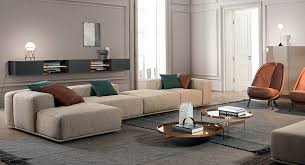The history of furniture design in Cyprus is a reflection of the island’s rich cultural heritage and its interaction with various civilizations over the centuries. From ancient times to the present day, Cypriot furniture has evolved in response to changing tastes, technologies, and societal influences. Here’s a brief overview of the evolution of furniture cyprus:
1. Ancient Influences: The earliest evidence of furniture in Cyprus dates back to the Neolithic period, with simple wooden stools and tables being common household items. Over time, as the island was inhabited by various civilizations, including the Greeks, Romans, and Byzantines, furniture design became more sophisticated, incorporating decorative elements such as carvings, inlays, and painted motifs.
2. Medieval and Ottoman Periods: During the medieval and Ottoman periods, Cyprus experienced significant cultural and architectural influences from the Middle East. This is evident in the design of furniture from this era, which often features intricate geometric patterns, arabesques, and ornamental details. Common materials include dark woods such as walnut and mahogany, as well as metal accents such as brass and copper.
3. Colonial Era: The arrival of the Venetians, Ottomans, and later the British, brought new design influences to Cyprus during the colonial era. European styles such as Baroque, Rococo, and Neoclassical began to influence furniture design, resulting in pieces that were more ornate and decorative. Imported materials such as silk, velvet, and marble became increasingly popular among the elite classes.
4. Modernization and Independence: In the 20th century, Cyprus underwent rapid modernization and urbanization following its independence from British rule. This period saw a shift towards more functional and minimalist furniture designs, influenced by European modernism and the Bauhaus movement. Bentwood chairs, modular sofas, and sleek, streamlined forms became emblematic of Cypriot furniture design during this time.
5. Contemporary Trends: Today, Cypriot furniture design continues to evolve, blending traditional craftsmanship with contemporary aesthetics and sustainable practices. Many designers draw inspiration from the island’s natural beauty and cultural heritage, creating pieces that are both functional and aesthetically pleasing. From eco-friendly materials to innovative modular designs, contemporary Cypriot furniture reflects the island’s ongoing commitment to innovation and creativity.
In conclusion, the evolution of furniture design in Cyprus is a testament to the island’s rich history and cultural diversity. From ancient influences to modern innovations, Cypriot furniture design continues to captivate and inspire, offering a unique blend of tradition, craftsmanship, and creativity for generations to come.
